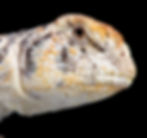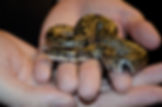Please call ahead to schedule an appointment. Occasionally, there are longer wait times when our staff is dealing with a medical emergency. We appreciate your patience. Book your appointment here >

Turtle Care Guide
Turtle Care Tips: Everything You Need To Know About Your Pet Turtle
Turtles are fascinating creatures and make for an attractive alternative to more common pets. They may not be furry and soft to cuddle, but their unique behavioral traits and quiet presence make them enjoyable companions to have around.
The lifespan of your pet turtle can vary slightly depending on exactly what species you own, but the increasingly popular red-eared slider can be expected to be with you for 15-25 years or more.
Note that hatchlings are commonly sold in the pet trade, despite the fact that the FDA Center for Veterinary Medicine established a law prohibiting the sale of live turtles under 4 inches in length. Baby turtles require specialized habitats (complete with heating, lighting and filtration) and a proper diet in order to survive. If you are looking to purchase a pet turtle, make sure to adopt from a reputable breeder. Your local exotic pet veterinarian can recommend where to buy.

The Natural History of Turtles
Different species of turtles make their homes in nearly all parts of the world. The red-eared slider (Trachemys scripta elegans) is one of the most common pet turtles, especially in their native United States, where they can be found naturally across much of the center and south-west, down into northern Mexico.
Turtles, unlike their tortoise cousins, live at least partially in the water and grow up to 12 inches in length. These cold-blooded reptiles are known for their hard protective shells, as well as swimming to stay moist and cool down, or basking in warm light to heat up. The red-eared slider can be identified by the broad red stripe that starts at the end of its eye and extends over the ear area.
Other Breeds of Turtles
Of course, different species thrive in different areas of the world. Besides the red-eared slider found in the United States, other common pet species include the box turtle, wood turtle and spotted turtle.
Is My Pet Turtle Male or Female?
Turtles, especially young turtles, can be difficult to sex, although a professional turtle vet can tell you for sure. Gender in adults is determined by external physical characteristics and behavior. In comparison to females, males have longer foreclaws (which are used in courtship), a longer tail, a longer distance from the body to the vent opening, a tail that is thicker at the base, and generally a smaller body size and shell length.


How to Care for Your Pet Turtle
The first step after acquiring your tortoise is to take him or her to a veterinarian who specializes in exotics and has experience with tortoises. The vet will perform a general check-up and usually recommend a fecal exam and blood work. This is extremely important since reptiles oftentimes carry disease, especially if they have been illegally smuggled from a foreign country.
Here are signs to check for when you bring your new tortoise home:
-
Legs should be strong and muscular. The tortoise must be able to lift itself from the ground.
-
Their vent, skin, scales, and beak should be clean.
-
Shells should be smooth and firm. Look for injuries, damage, or pyramiding of scutes.
-
Eyes should be clear, bright, and free from discharge. The nose should also be free of discharge or foreign objects.
-
They should not be breathing with an open mouth.
-
A healthy tortoise is alert and responsive.
Your Turtle Enclosure
As turtles require both a significant amount of water in which to swim, and are sensitive to temperatures that do not match those of their natural habitats, the best bet is to have an indoor aquarium. In some places, turtles can be kept outdoors year-round as long as they have a large enough pond or alternative water source to enjoy. Keep in mind, however, that many turtles are surprisingly determined climbers, so even outdoor areas should be sufficiently enclosed.
In any case, most owners find it best to have an indoor tank for when the turtle is sick or any other time it might be beneficial to have greater control over its environment. Tanks with proper lighting and temperature control also means you can avoid hibernating your turtle and the associated health risks.
Should Your Turtle Hibernate?
It is not recommended to hibernate a pet turtle, even if the same species hibernate in the wild. Hibernation plays a key role in procreation for many species of turtles, but also compromises their immune systems and can lead to many unnecessary health concerns. You may choose to keep your turtle outside in the summer months, but a suitable indoor tank with a controlled environment is best in the winter to avoid hibernation.
How Much Space Does a Turtle Need?
The minimum enclosure size for a hatchling red-eared slider should be a 30-gallon aquarium. For adults, this size requirement is 60-125 gallons. Ten gallons of water is recommended per 1 inch of shell length.
As a general rule, the water depth should be at least 2 times the turtle's carapace length, or at least 2 feet. This gives them room to swim and prevents drowning if the turtle should flip over and not be able to right itself.
Finally, there should be at least 6 inches of air space between the surface of the water to the top edge of the tank in order to prevent escapes.
What Should Be in the Tank?
Water and basking areas. These can be islands or platforms established at the waterline of the tank, and should be located under a heat source providing temperatures of 90-95 degrees. Water temperatures should range from 75-86 degrees. If you own a hatchling, the water should be on the higher end of that scale, whereas adults will be happy on the lower end.
It is also important to avoid putting any substrate in the tank that is smaller than the size of the turtle's head to prevent foreign body ingestion.
Cleaning Up
Turtle tanks require robust water filtration systems as these reptiles eat a lot and tend to foul the water quickly with their messy eating habits and frequent defecation. Regular cleanings and partial to full water changes are also recommended. You may want to consider keeping a separate tank just for feeding.
Lastly, make sure the tank or enclosure protects your pet turtle from cats, dogs or any other predators. Turtle shells offer some protection, but a broken or fractured shell can prove fatal and your pet turtle should be able to enjoy a stress-free environment.
Turtle Diet and Nutrition
What Do Turtles Eat?
In the wild, turtles like the red-eared slider are omnivorous. However, juveniles are mainly carnivorous and become more herbivorous as they mature. Juvenile turtles should receive a diet of up to 40% protein. Plant matter in the form of chopped leafy greens or finely chopped mixed vegetables may be offered once weekly but may not be readily accepted until the turtle grows older.
Acceptable protein sources:
-
Earthworms
-
Mealworms
-
Feeder fish
-
Guppies
For adults, 25-50% of the diet may consist of commercial turtle pellets and animal protein. The remaining 50-75% should consist of chopped plant matter.
Acceptable Plant Matter:
-
Kale
-
Romaine lettuce
-
Red leaf lettuce
-
Dandelion
-
Watercress
-
Parsley
-
Green leaf lettuce
-
Zucchini
-
Sweet potato
-
Shredded carrot
-
Shredded squash
Live aquatic plants like duckweed, water lily, water lettuce, water fern and water hyacinth may be healthy additions to your turtle's diet. Fruit, however, should only be offered as a rare treat.
How Often Should Turtles Be Fed?
Hatchlings and juveniles should be fed on a daily basis; however, it is best to offer them no more than they will consume during a single feeding session (approximately 15 minutes) in order to minimize water contamination. Adults may be fed every 2-3 days. Turtles may aggressively beg for food, but should be ignored to avoid overfeeding.
Turtle Behavior
Pet turtles are intelligent and like to interact with their owners in engaging and friendly ways. This makes them a truly fascinating and unique pet to own, and yet they also have unique traits to be aware of, especially hibernation.


Medical Care for Your Pet Turtle
Turtles require a fair amount of care to stay healthy, mostly in the form of paying attention to their behavior. Visible discharge from either the nose, mouth, eyes or cloaca, respiratory distress, wounds, lesions and shell rot and all risks you should discuss with your local reptile vet.
How to Tell When Your Turtle Is Sick:
Here are some signs to look for that will alert you that your turtle is experiencing a health issue that requires attention.
-
Gasping for air
-
Blowing bubbles out of the nose
-
Erratic swimming
-
Abnormal buoyancy
-
Swollen or closed eyes
-
Discoloration of the skin or shell
-
Diarrhea
Turtle Emergencies:
In other cases, your turtle should be taken for medical attention immediately.
-
Shell fractures
-
Foreign body ingestion
-
Cloacal prolapse
In addition, turtles are vulnerable to parasites and carry salmonella bacteria in their intestinal tract. While not a threat to your turtle, it is likely to shed these bacteria in its feces, so it is important for you to maintain good hygiene practices at all times.
If you ever feel unsure or worry that your turtle may need attention, your safest bet is to contact your local exotics, specialty vet, for advice. At Long Island Bird & Exotics, we are on-call 24 hours/day. Contact us about your turtle emergencies if you live in the NY area!
Boarding for Turtles
At Long Island Birds and Exotic Pets, we provide turtle boarding services. We've got all the proper tanks, food and medical expertise to keep your turtle calm, happy and healthy for as long as it needs to stay with us.
Contact us for more information.











